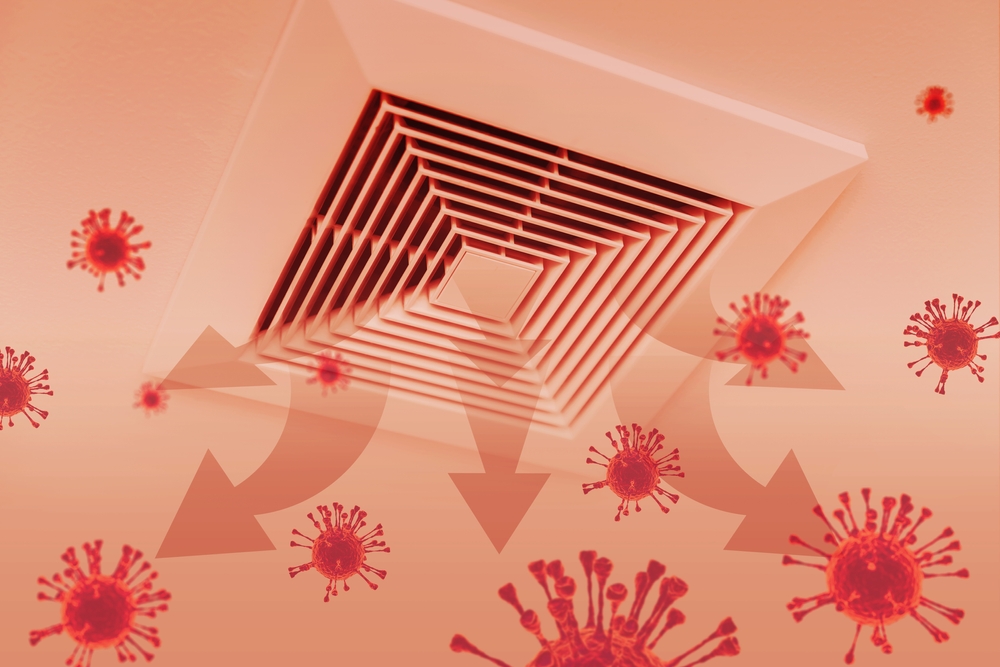A nongovernmental task force recently recommended that building owners begin taking four steps to address SARS-CoV-2 infection risks in schools and workplaces: verifying building systems are performing as designed, increasing outdoor air ventilation, upgrading air filtration, and deploying portable air cleaners where needed.
The Lancet COVID-19 Commission’s Task Force on Safe Work, Safe School, and Safe Travel released its report, “The First Four Healthy Building Strategies Every Building Should Pursue to Reduce Risk from COVID-19,” on July 8.
The task force cited the role of virus-laden aerosols in COVID-19 transmission as the reason for its four recommendations. Aerosols are small respiratory particles that are suspended in the air and can be carried by indoor air currents over long distances. They differ from respiratory droplets, which travel shorter distances.
The process of verifying building systems, which the task force referred to as “commissioning” for new buildings and “recommissioning” for existing ones, involves ensuring that building heating, ventilation, and air conditioning (HVAC) equipment is performing as designed. HVAC system deficiencies may include imbalanced airflow, HVAC schedule mismatch with occupied hours, damper malfunction, and system controls malfunctions.
Beyond combating disease transmission, the benefits of commissioning or recommissioning may include cost and energy savings, improved building occupant comfort, improved indoor air quality, and extended equipment life, according to the task force.
Increased outdoor air ventilation achieved by HVAC system air exchanges or open windows can dilute concentrations of infectious particles in an indoor space. The task force suggested that four to six air changes per hour can reduce the risk of airborne infectious disease transmission indoors. The report also pointed to an association between increased outdoor air ventilation and reduced use of sick leave.
The report noted additional benefits of higher ventilation rates, such as
improved cognitive function and work performance, fewer reports of building-related symptoms and illness (“sick building” syndrome), healthcare cost savings, reduced asthma, and reduced absenteeism.
The task force also recommended that building owners upgrade to Minimum Efficiency Reporting Value (MERV) 13 filters or higher. MERV 13 or higher filters remove airborne particles from outdoor air introduced into a building’s systems, including particles from desert dust storms, vehicle traffic, and wildfires, as well as air recirculated within a building.
Lastly, the group recommended supplementing ventilation and system air filtration with the use of portable air cleaners where needed. These free-standing, plug-in portable air cleaners with high-efficiency particulate air (HEPA) filters capture airborne particles in rooms where they are placed.
While employer guidance from the Occupational Safety and Health Administration (OSHA) does include a “maintain ventilation systems” recommendation, the guidance also recommends facilitating COVID-19 vaccination, maintaining physical distancing, routine cleaning and disinfection, and the use of face coverings.
The Lancet COVID-19 Commission, whose members include David Michaels, former assistant secretary of labor for occupational safety and health, is chaired by Joseph G. Allen, chair of Harvard University’s T.H. Chan School of Public Health.
TheLancet COVID-19 Commission, formed by the medical journal The Lancet, is an interdisciplinary group focused on four objectives:
- Recommending best practices for suppressing the COVID-19 pandemic;
- Addressing the humanitarian crises arising from the pandemic;
- Addressing the financial and economic crises resulting from the pandemic; and
- Rebuilding an inclusive, fair, and sustainable world.
The commission has 12 task forces addressing issues such as vaccine development, humanitarian relief strategies, safe workplaces, and global economic recovery.

